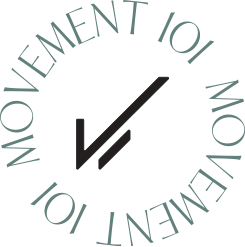|
Achilles tendinopathy or tendinitis of the heel is an injury condition to the muscle-tendon connecting calf muscles to the heel bone. It is usually caused by severe overload, blunt trauma, or muscle fatigue of the Achilles tendon. However, it is the strongest and largest of all human tendons and provides serious resistance to enormous tensile forces daily. But factors like decreased arterial blood circulation lowered nutrition, and a decline in metabolic activities can lead to chronic Achilles injuries due to overuse. The symptoms can be acute pain, stiffness of tendons, and inflammations. Here we will try to present a physio perspective into the causes, symptoms, and remedies for this overuse injury for your reference.
A physiotherapist in Marrickville has been asked, ”How often should I get a massage.” The short response is to get massages as often as your body demands it. The longer version of the answer considers several factors influencing the frequency, type, and when to get massages.
Getting a massage every week can help alleviate stress and release tension; however, this may be an unrealistic schedule for healthy but busy individuals with a lot of roles. On the other hand, accident or injury victims can take advantage of massages to relieve pain and aid in faster recovery. For this class of people, regular massages may not just be recommended but essential towards living a healthy life.
Knee pain can be a nagging and recurrent issue affecting your performance, productivity, and quality of life. Based on the location and sheer importance of the knee, you may find yourself unable to engage in your favorite sport or, worse still, unable to sleep due to knee pain. Suppose this problem stops you from engaging in your normal daily activities. In that case, it may be best to schedule a consultation meeting with a physiotherapist in Botany to have the problem looked into. Ahead of your appointment with the physiotherapists, below are some of the information you ought to know.
How A Physiotherapist Can HelpYou wouldn't visit a physiotherapist if you weren't sure they could help with your knee pain problem. Physiotherapists are trained professionals who understand painful sensations in parts of the body and recommend treatments to address those problems and alleviate pain. In most cases, they can recommend lifestyle changes to help you cope better with the condition while being treated. If you are suffering from knee pain, your physiotherapists can also identify the symptoms, including poor sleeping habits and declining general health, fitness, mood, and others. Depending on who you visit and their specialty, physiotherapists can use one or a combination of these methods to address your knee problem:
Five Things That Can Affect Your Knee PainAs you enjoy the advantages of one or more of these treatment modalities, below are the five important things that can affect your knee pain.Choice Of FootwearThe choice of your footwear affects how your foot is positioned and, in turn, increases or decreases stress levels on your knee. Wearing shoes that cause pain in your foot or knee region has a long-term effect which may be evident through recurrent knee pain, even when those uncomfortable shoes have been pulled. An important choice you should consciously make is to always choose comfortable shoes. If you are already battling knee pain, it is best to choose comfortable lace-up shoes or trainers because they offer great support along the foot's arch. Trainers and lace-up shoes are also recommended because of the firm heel cup design that helps increase overall stability and leg alignment. Poor choice of footwear, whether because they are too small or uncomfortable, may further complicate knee pain. You should also be careful of old shoes that are worn out, flat slip-on shoes, unsupportive trainers, air trainers, stiff shoes, and shoes with stiff soles.IceOne of the commonest home remedies for inflammation and pain around the joint is ice and ice packs. Ice packs are great for lowering the temperature in joints that are heating up and inflamed. If you are dealing with knee pain, knowing how to use your ice can save you a lot of discomfort. Ice can often be misused, especially because they are a cheap and safe solution to lower pain and discomfort. To get the best outcomes, choose to routinely ice your knees or affected joints two to three times a day. Each icing session can last anywhere between 15 and 20 minutes. If you experience mild to severe pain after exercising, it is best to ice your joints or the painful area after each exercise session. Icing your knee doesn't need elaborate preparation; you can simply put ice in a towel and wrap it around the sore knee. Make sure to maintain comfortable pressure to ensure the best results.ExercisesMany people who have a bad knee see exercising as an undue punishment for the bad knee. This isn't true. You should understand that exercises help strengthen the muscle; on the other hand, too much of everything is bad. With constant and healthy exercise, you'll build strength and stability in the bad knee while improving its overall condition. It is best to consult with a professional when choosing exercises to improve your bad knee. Always remember that there is no standard recipe for exercise. However, some exercises are more tailored towards building strength and stamina in select joints than others. In choosing exercises, focus on: Exercises that strengthen the bad muscle without pain. Remember that you cannot strengthen a muscle while exposing it to a greater level of stress and pain. Maintenance of correct alignment through the knee. Many people do not get results because they aren't doing things right. Choose to exercise the right way. Exercises that reflect your fitness and strength level while also considering your long-term goals. Functional exercises that help you bear weight on the bad or painful knee. It is important for you to start small and build on your exercise routine over time. This provides a foundation for your muscles while helping it adapt to advanced steps as you progress.Knee Support / TapingKnee supports are designed to help people with knee pain cope with their condition. There are different knee support and braces on the market, with each one offering specific benefits. The following are the most recommended.TapingResearch and technological advancements have led to newer types of tapes like Rock tape and KT Tape. These newer tapes offer more advantages, including breathability, flexibility and stretch capacity, and waterproof features. When correctly applied, these tapes can improve the biomechanics of the knee, reduce pain, and improve muscle functions.Knee BracesThere are different types of knee braces, some of the popular ones and their functions are: Braces with metal support – A perfect choice for ligament instability. Full hinged knee braces – Provides support for athletes in major sporting events. Elastic or neoprene supports – Improves warmth and compression while delivering light support for the knee. Runner knee strap – Applied under the kneecap to take pressure and stress of the patella tendon. Braces with crossover straps – Offers more support compared to pull-on braces.LifestyleYour lifestyle choices can affect your knee and knee health. To reduce knee pain and improve your knee health, some of the recommended lifestyle changes you should make include:
Movement 53/95 Bonar Street Wolli Creek NSW 2205 0295679452 Find us on Social Media https://www.facebook.com/Movement101.Physio https://twitter.com/mvmt_101 https://www.linkedin.com/company/wolli-creek-physiotherapy-&-pilates/ https://www.youtube.com/channel/UCV3IfTrtE9sAwbHRdOTZJ8g https://www.instagram.com/movement101.physio/ |
AuthorWrite something about yourself. No need to be fancy, just an overview. Archives
April 2024
Categories |
|
|
|


 RSS Feed
RSS Feed









